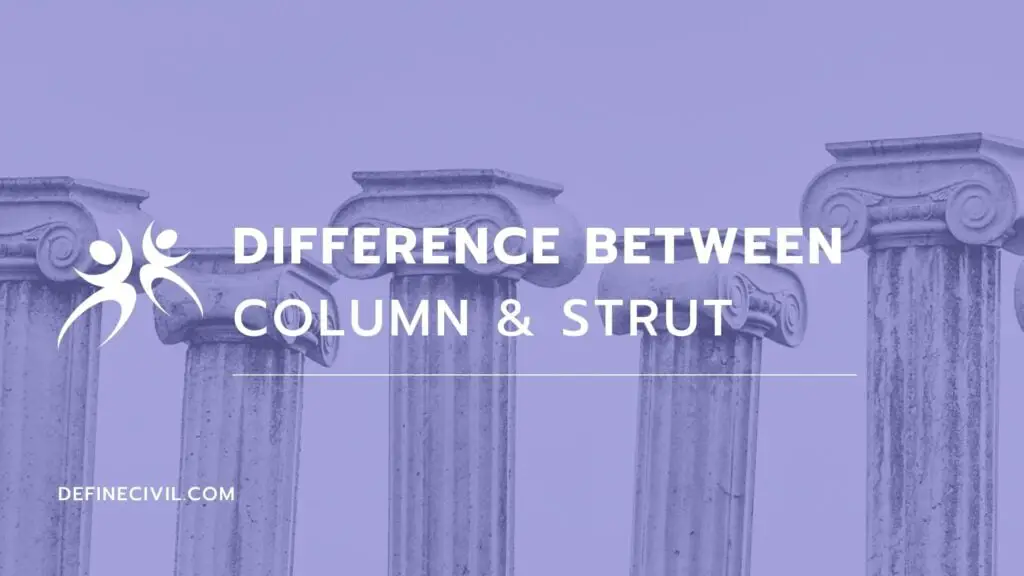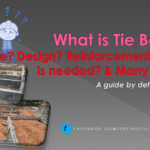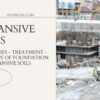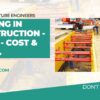A structural member subjected to axial compressive load is known as strut. It may be a horizontal, vertical, or inclined member. However, a vertical strut designers provide in building is known as column. Hence, strut and column, both are structural members and are subjected to axial compressive load. But still there’re number of differences between column and strut.
The main difference between column and strut is that column exists as a part of a frame structure whereas a strut is a structural member of a truss system.
So, let’s explore how two differs from each other:

Strut:
A strut is a structural member that only takes compressive force while the bending moment is zero in it. Anyhow, it is supported by hinged or pin jointed supports at both the ends. We use this type of structural compressive member in different types of trusses.
A strut can fall in two categories – continuous or discontinuous. So, if it is spanning between two supports, then it is called as discontinuous strut. On the other hand, if it consists of more than two supports or gussets plate, it is called as continuous strut.
So, we can conclude that strut is the compressive member of the truss structure that is used in the bridge trusses and roof trusses. The distance between two points of strut is know as its effective length. Ratio of its effective length to least radius of gyration is known as slenderness ratio.
Anyhow, in case of strut, slenderness ration is usually more than 20. While designing struts, you must consider slenderness ratio, and it must be greater than following values in case of different loads:
| Slenderness Ratio | Loading Conditions
|
| 180
|
Dead load and superimposed load |
| 250
|
Dead load, wind load, and superimposed load |
| 350
|
Dead load and reversal of force |
Strut may be horizontal, vertical, and inclined. Its cross-sectional area may include circular section, tubular section, I-section, T-section, Channels, or compound section. It is subjected to axial compressive force only and there’s no gravity loading.
Also Read: 14 Types of Columns in construction
Column
A column usually bears series of different loadings apart from mere axial compressive load. Depending on the type of structure, a column may bear gravity load, bending moment, shear force, buckling, and horizontal load. The horizontal load may be a result of earthquake and wind load.
Column is a compressive member of frame structure which can be of steel or concrete. We design columns to carry compressive forces. A column failure is due to following stresses in it:
- Direct Compressive Stress
- Buckling Stresses
- Combination of direct and buckling stress
Also Read: Types of Building Structure in Civil Engineering with images
Difference between two points of column is known as effective length. Ratio of effective length to least radius of gyration is known as slenderness ratio. Depending upon slenderness ratio and mode of failure column is divided into:
- short column
- intermediate column
- long column
Short Column:
When slenderness ratio is less than 12, it is known as short column. Its failure mode is because of compressive stress and is subjected to crushing.
Long Column:
When slenderness ratio is more than 50, it is known as long column. Its failure mode is because of buckling stress and is failed because of buckling.
Intermediate Column:
When slenderness ratio is between 12 to 50, it is known as intermediate column it is fail because of buckling as well as compression stresses.
Difference between Column and Strut in tabular form:
| Column
|
Strut |
| Column is compressive member of frame structure | It is compressive member of truss structure |
| It is design for only compressive force | It is designed for compressive force as well as tension force |
| It is subjected to axial load and sometime horizontal load in case of earthquake or wind load. | It is subjected to only axial load and bending moment is zero |
| It is subjected to buckling
|
It is not subjected to buckling |
| It is always vertical compressive member
|
It can be horizontal, vertical, or inclined member. |
| In case of column design, ratio of effective length to diameter is greater than 3 | In case of strut design, ratio of effective length to diameter is less than 3
|
| Column is subjected to gravity load
|
Strut is not subjected to gravity load |
| Load can be applied anywhere throughout the column
Cross sectional dimensions of column are large
|
Load is only applied at the joint in case of strut
Cross sectional dimensions of struts are small |
| Columns are used in steel or concrete buildings. | Struts are use in roof trusses and bridge trusses |
| Slenderness ratio of columns is low
|
Slenderness ratio of strut is high |
| A column generally fails due to buckling. | A strut generally fails as a result of crushing. |



















